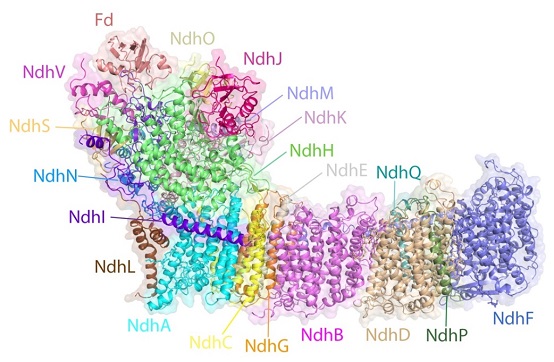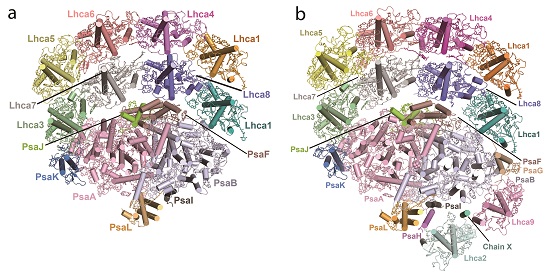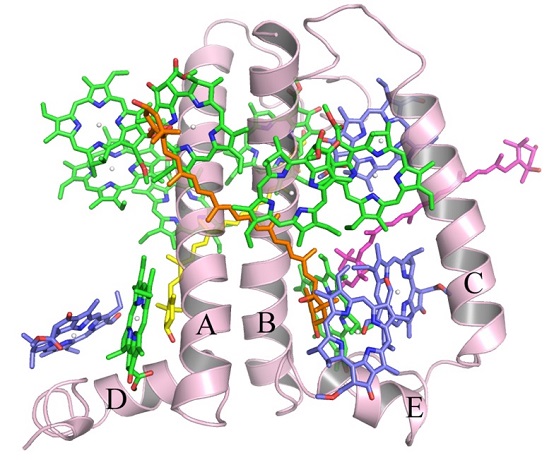
Xiaowei Pan (Resigned), Ph.D, Associate Professor
-
Member of the Youth Innovation Promotion Association of CAS
National Laboratory of Biomacromolecules, IBP
Research Interests: Structural Biology of Photosynthesis
Email: panxw@ibp.ac.cn
Tel: 010-64888507
Address: 15 Datun Road, Chaoyang District, Beijing, 100101, China
Chinese personal homepage
- Biography
1999.09 - 2003.07 Bachelor of Science in Pharmacy, School of Pharmaceutical Sciences, Peking University, Beijing, China
2003.09 - 2009.12 Doctor of Science in Biophysics, Institute of Biophysics, Chinese Academy of Sciences, Beijing, China
2010.01 - 2011.12 Assistant Professor, Institute of Biophysics, Chinese Academy of Sciences, Beijing, China
2011.12 - 2020.12 Associate Professor, Institute of Biophysics, Chinese Academy of Sciences, Beijing, China.
- Awards
2018 Members of the Youth Innovation Promotion Association, CAS
2011 David Blow Studentship bursary, by CCP4 Study Weekend
2009 Merit students of Chinese Academy of Sciences
2008 Merit students of Chinese Academy of Sciences
2007 Outstanding student leader of Chinese Academy of Sciences
2003 Outstanding Graduates of Peking University
2003 Outstanding Graduates of Beijing City
- Membership in Academies & Societies
- Research Interests
Structural and functional studies of photosynthetic membrane protein complex.
Photosynthesis is a process in which photosynthetic organisms use light energy to synthesize water and carbonate. Oxygenated photosynthetic organisms, such as cyanobacteria, algae and higher plants can also release oxygen, providing the basis for almost all living organisms on Earth. Both plants and algae have two photosystems, namely photosystem I and photosystem II, which are both composed of reaction center and light-harvesting antennae. The light-harvesting complexesare responsible for absorbing solar energy and transmitting it to the reaction center, where the water-splitting and oxygen releasing take place. In order to adapt to the continual changing natural environment, photosynthetic organisms have evolved a series of mechanisms, including non-photochemical quenching, state transitions and cycle electron transport. In order to reveal the molecular mechanism of these important processes, we use the X-ray crystallography and Cryo-electron microscopy techniques to study the structure and function of the related super-complexes.Ourmajor research progress includes:
1. Revealed the molecular mechanism of the cyclic electron transfer process in cyanobacteria (Nat Commun, 2020).
2. Determined the structure of photosystem I from green algae, and revealed its complicated antenna system and pigment network(Nat Plants,2019).
3. Clarified the mechanism of state transition, which is an important process for balancing the energy distribution between the two photosystems under fluctuating illumination in high plants (Science, 2018; BBA Bioenerg, 2020).
4. Determined the structure of CP29, which is one of the light harvesting complex of photosystem II, and revealed the molecular mechanism of its efficient capacity in light capture and energy transfer. (Nat Struct Mol Biol, 2011; Curr Opin Struct Biol, 2013).

Structure of cyclic electron transfer supercomplex NDH-Fd from Thermosynechococcuselongatus BP-1 (Pan X, Cao D, Xie F, Xu F, et al. Nat commun,2019).

Overall structure of PSI from Chlamydomonasreinhardtii. (a) PSI-8LHCI; (b) PSI-10LHCI. (Su X, Ma J, Pan X, et al. Nat Plants,2019).

Structure of state transition complex PSI-LHCI-LHCII from maize (Pan X, Ma J, Su X, et al. Science, 2018).

Structure of light harvesting complex CP29 from spinach(Pan X, et al. Nat Struct Mol Biol, 2011).
- Grants
- Selected Publications
1. Pan X*; Cao D*, Xie F*; Xu F*; Su X; Mi H#; Zhang X#; Li M# (2020) Structural basis for electron transport mechanism of complex I-like photosynthetic NAD(P)H dehydrogenase, Nature Communications 11:610.
2. Pan X; Cao P; Su X; Liu Z; Li M# (2020) Structural analysis and comparison of light-harvesting complexes I and II, Biochim Biophys Acta Bioenerg 1861: 148038.
3. Cao P; Pan X; Su X; Liu Z; Li M# (2020) Assembly of eukaryotic photosystem II with diverse light-harvesting antennas, Curr Opin Struct Biol 63: 49-57.
4. Yu A*; Xie Y*; Pan X; Zhang H; Su X; Cao P; Chang W; Li M# (2020) Photosynthetic Phosphoribulokinase Structures: Enzymatic Mechanisms and the Redox Regulation of the Calvin-Benson-Bassham Cycle. The Plant Cell 32: 1556-1573.
5. Gao Y*; Zhang H*; Fan M; Jia C; Shi L; Pan X; Cao P; Zhao X; Chang W; Li M# (2020) Structural insights into catalytic mechanism and product delivery of cyanobacterial acyl-acyl carrier protein reductase, Nature Communications 11: 1525
6. Su X*, Ma J*, Pan X*, Zhao X, Chang W, Liu Z, Zhang X#, Li M# (2019) Antenna arrangement and energy transfer pathways of a green algal photosystem-I-LHCI supercomplex. Nat Plants 5: 273-281.
7. Pan X*, Ma J*, Su X*, Cao P, Chang W, Liu Z, Zhang X#, Li M# (2018) Structure of the maize photosystem I supercomplex with light-harvesting complexes I and II. Science 360: 1109-1113.
8. Cao P, Su X, Pan X, Liu Z, Chang W, Li M# (2018) Structure, assembly and energy transfer of plant photosystem II supercomplex. Biochim Biophys Acta Bioenerg 1859: 633-644.
9. Fox KF, Unlu C, Balevicius V, Jr., Ramdour BN, Kern C, Pan X, Li M, van Amerongen H, Duffy CDP# (2018) A possible molecular basis for photoprotection in the minor antenna proteins of plants. Biochim Biophys Acta Bioenerg 1859: 471-481.
10. Cao P*, Xie Y*, Li M#, Pan X, Zhang H, Zhao X, Su X, Cheng T, Chang W# (2015) Crystal structure analysis of extrinsic PsbP protein of photosystem II reveals a manganese-induced conformational change. Mol Plant 8: 664-666.
11. Fan M, Li M#, Liu Z, Cao P, Pan X, Zhang H, Zhao X, Zhang J, Chang W# (2015) Crystal structures of the PsbS protein essential for photoprotection in plants. Nat Struct Mol Biol 22: 729-735.
12. Jia C, Li M#, Li J, Zhang J, Zhang H, Cao P, Pan X, Lu X, Chang W# (2015) Structural insights into the catalytic mechanism of aldehyde-deformylating oxygenases. Protein Cell 6: 55-67.
13. Zhang H, Li M#, Gao Y, Jia C, Pan X, Cao P, Zhao X, Zhang J, Chang W# (2015) Structural implications of Dpy30 oligomerization for MLL/SET1 COMPASS H3K4 trimethylation. Protein Cell 6: 147-151.
14. Feng X, Pan X, Li M, Pieper J, Chang W, Jankowiak R# (2013) Spectroscopic study of the light-harvesting CP29 antenna complex of photosystem II--part I. J Phys Chem B 117: 6585-6592.
15. Guo J, Wei X, Li M, Pan X, Chang W#, Liu Z# (2013) Structure of the catalytic domain of a state transition kinase homolog from Micromonas algae. Protein Cell 4: 607-619.
16. Pan X, Liu Z#, Li M, Chang W# (2013) Architecture and function of plant light-harvesting complexes II. Curr Opin Struct Biol 23: 515-525.
17. Pan X, Li M, Wan T, Wang L, Jia C, Hou Z, Zhao X, Zhang J, Chang W# (2011) Structural insights into energy regulation of light-harvesting complex CP29 from spinach. Nat Struct Mol Biol 18: 309-315.
18. Peng S, Zhang H, Gao Y, Pan X, Cao P, Li M, Chang W# (2011) Crystal structure of uroporphyrinogen III synthase from Pseudomonas syringae pv. tomato DC3000. Biochem Biophys Res Commun 408: 576-581.
19. Wang L, Zhao F, Li M, Zhang H, Gao Y, Cao P, Pan X, Wang Z, Chang W# (2011) Conformational Changes of rBTI from Buckwheat upon Binding to Trypsin: Implications for the Role of the P-8 ' Residue in the Potato Inhibitor I Family. Plos One 6:1-7.
20. Pan X, Zhang H, Gao Y, Li M, Chang W# (2009) Crystal structures of Pseudomonas syringae pv. tomato DC3000 quinone oxidoreductase and its complex with NADPH. Biochem Biophys Res Commun 390: 597-602.
21. Li M, Chen Z, Zhang P, Pan X, Jiang C, An X, Liu S, Chang W# (2008) Crystal structure studies on sulfur oxygenase reductase from Acidianus tengchongensis. Biochem Biophys Res Commun 369: 919-923.
22. Li M, Zhang P, Pan X, Chang W# (2007) Crystal structure study on human S100A13 at 2.0 A resolution. Biochem Biophys Res Commun 356: 616-621.
23. Li M*, Li Y*, Chen J*, Wei W, Pan X, Liu J, Liu Q, Leu W, Zhang L, Yang X#, Lu J, Wang K (2007) Copper ions inhibit S-adenosylhomocysteine hydrolase by causing dissociation of NAD+ cofactor. Biochemistry 46: 11451-11458.
(From Xiaowei Pan, June 08, 2020)

